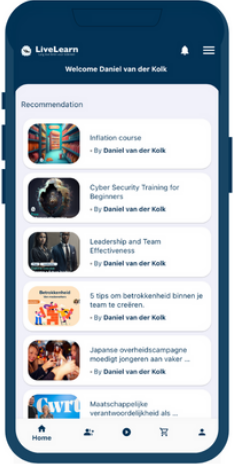
Artikel
27
maart
Organisational Integrity: Preventing Issues by Behaviour Analysis
How do you explain integrity issues or misconduct within organisations? And, more importantly, how do you prevent it? These questions were at the forefront during the second part of our virtual training week. Under the guidance of colleague Dr. Wieke Scholten, we delved into a case involving an international bank. &samhoud investigated the undesirable behaviour patterns within a department that could lead to potential future issues. We take you through the three key lessons from this session.
“Combine the perspectives of different team members and encourage dissent to arrive at well-founded and balanced conclusions.”
After conducting the case investigation ourselves, Scholten provided insights into how this typically unfolds in a normal process. Following an extensive data collection process, a team of multiple advisors dedicates two days to a collaborative analysis of risky behavioral patterns and underlying root causes. Everyone has a voice, explains Scholten. This prevents psychological biases within our own team. One of the risks in such exploratory research, for example, is a ‘confirmation bias’: individuals may quickly seek data that confirms their existing beliefs. By building conclusions with different team members and challenging each other’s assumptions, we arrive at well-founded behavioral patterns and the causes behind them. If you want to learn more about our analyses and interventions on risky behavior within organisations, please contact Wieke Scholten. Wieke Scholten holds a PhD in the impact of social norms and team climate on unethical behavior. She played a key role in the behavior and culture supervision at DNB, served as the Head of Behavioral Risk at RBS London, and now applies her knowledge and experience at &samhoud across various financial institutions.
As a leader, you have to realise how scary you can be and therefore you need to strengthen your listening skills. The moment you are in a leadership position it becomes essential to listen to what’s not being said. Actively invite people to share their ideas, embrace vulnerability and accept that it’s okay not to have all the answers. This allows for a more authentic connection with your team.
Leaders often forget that people act differently to people higher in the hierarchy. As a leader you might think that you are approachable and that you have open relationships with your employees, but the fact is that people perceive you different.
The moment you become the business man or woman of the year: be aware of your own narcistic tendencies and realise that your life might turn into an echo chamber where everybody tries to please you.
For leaders it is essential to question your list of trusted advisors and connect with the less obvious people around you. Surround yourself with a diverse group of people, including both older and younger individuals, to keep your mind fresh and open to new ideas.
What's your reaction ?
Follow us on Social Media
Some Categories

 Inloggen
Inloggen
 Registreren
Registreren







Comments (0)
No reviews found
Add Comment